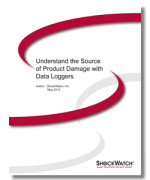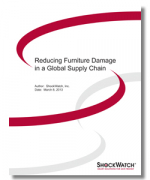Understand the Source of Product Damage with Data Loggers
In the age of big data, companies are accumulating mountains of it. Data is gathered by every department in an organization on a countless number of parameters. The supply chain function is not different. How are we performing? How many units have we sold? Where are my goods in the supply chain right now? How many units are lost in the supply chain? How much am I spending on packaging? Is my packaging adequate? How many of my goods are damaged in the supply chain? Could I reduce my packaging costs somehow?
The number of questions that we ask ourselves daily is constantly growing. One more question we should ask ourselves is “What are we doing differently as a result of having all this data?” Today more than ever, it is important to take this mountain of data and turn it into information. Actionable information allows you to develop a plan to address challenges in your supply chain.
Every day an amazing number of shipments are made around the globe. There is a constant rush to get products from where they are to where they need to be. Even when everything appears to be the same in the supply chain – same carrier, same shipping lane, same packaging - every day is different. Any number of variables can come into play for any particular shipment. These variables add to our list of questions, and these are more difficult to quantify. Were the people handling my product aware that it’s fragile? Were they trained properly to treat my product with care? Were the conditions on the dock, on the road, or in the warehouse all the same? Was anyone in more of a hurry than normal and that caused my shipment to be mishandled? What is really happening to my product once it is packaged and sent on its way?
What’s Related



Favorites





